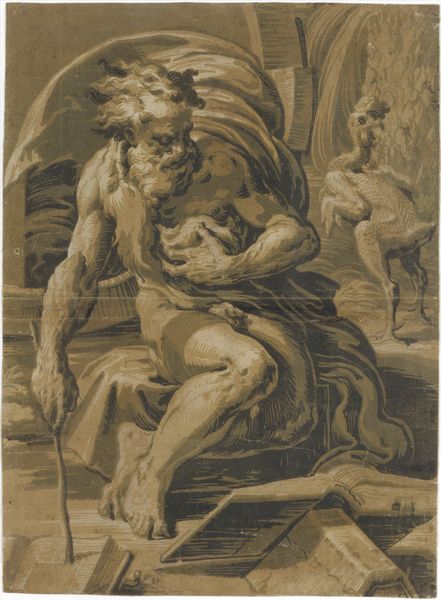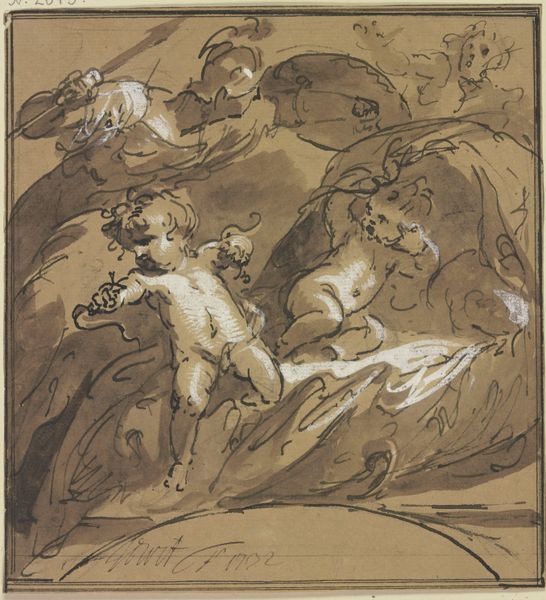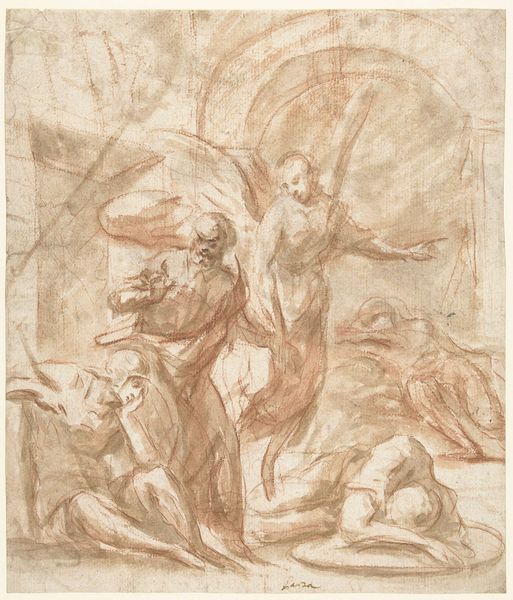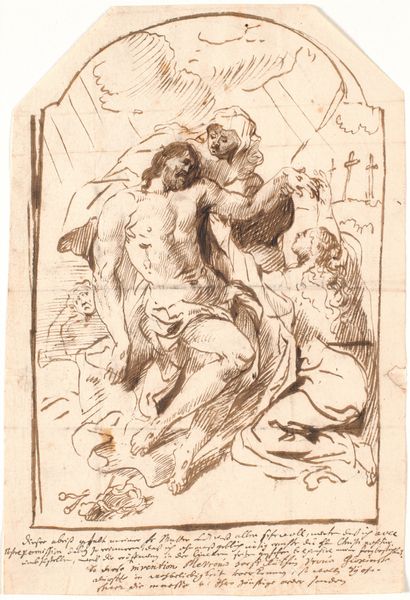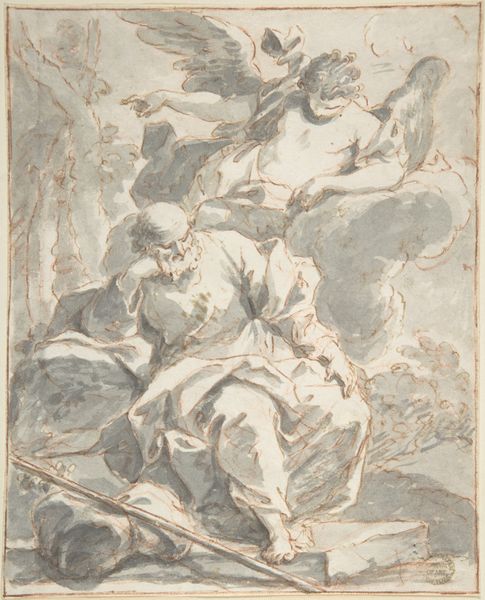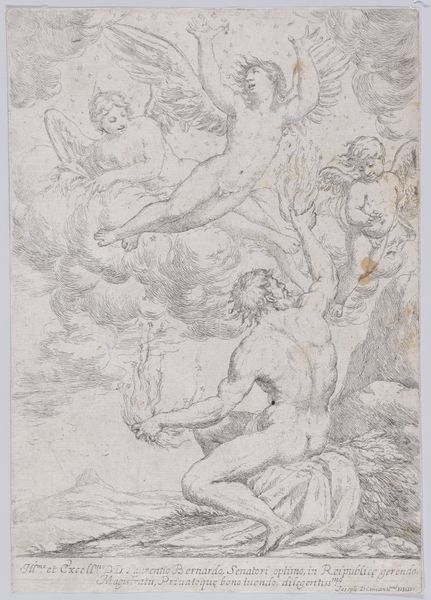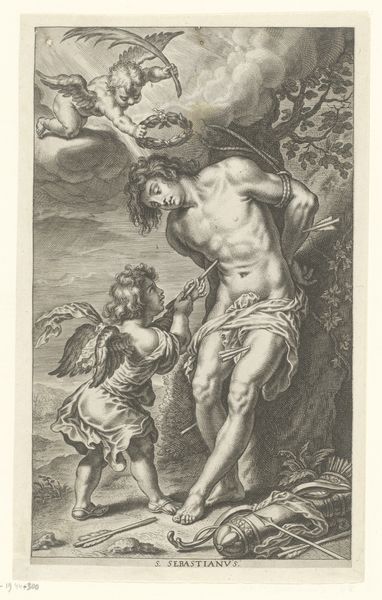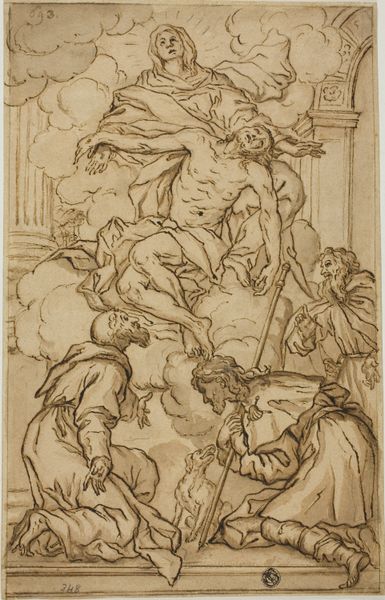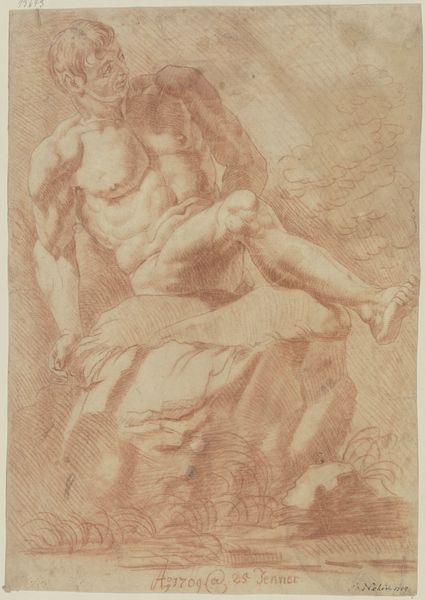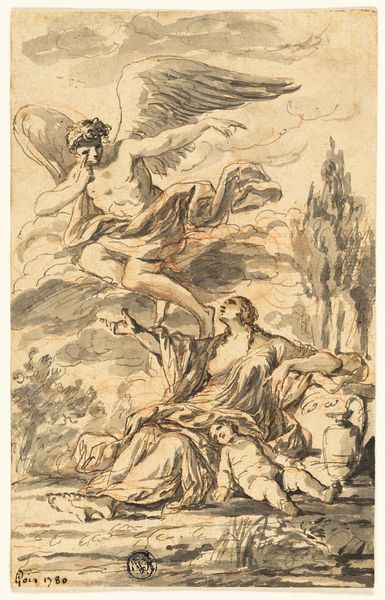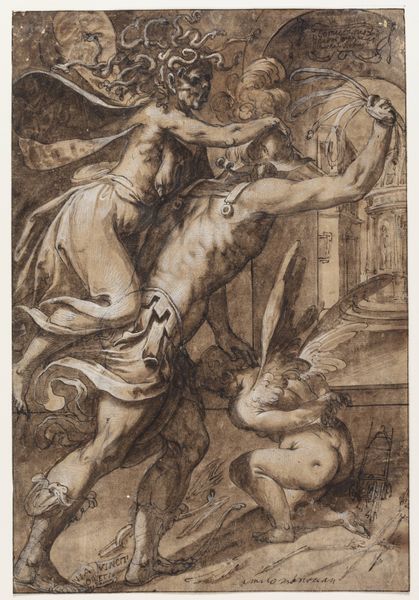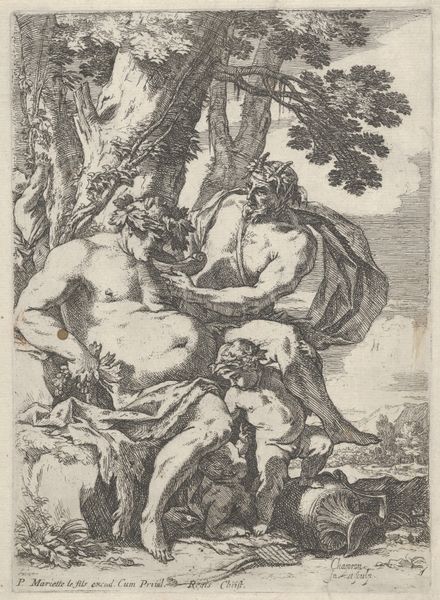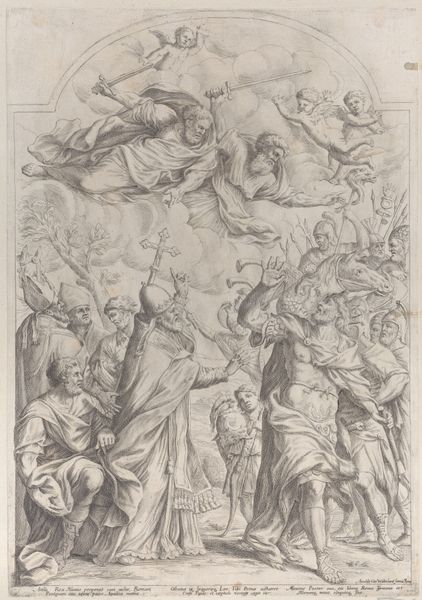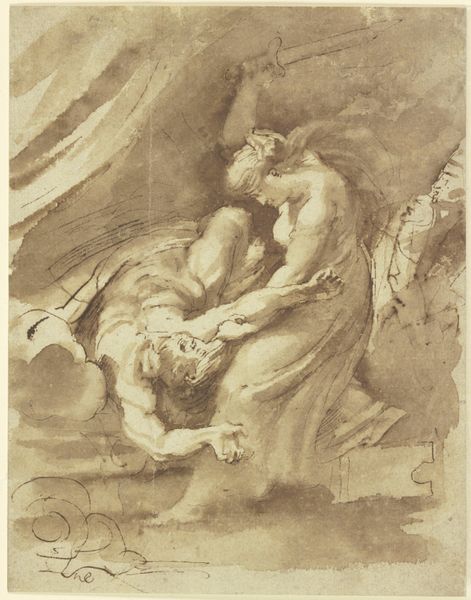
drawing, print, paper, ink, chalk
#
drawing
# print
#
figuration
#
paper
#
11_renaissance
#
charcoal art
#
ink
#
chalk
#
history-painting
#
italian-renaissance
#
italy
Dimensions: 269 × 202 mm
Copyright: Public Domain
Curator: This sepia-toned drawing is titled "Descent from the Cross," attributed to Domenico Piola. It's currently held here at the Art Institute. Editor: Instantly, I see the weight, the physical burden conveyed in this scene. It feels raw, almost like looking at an anatomical study. All the brown ink and chalk makes the suffering seems ancient and palpable. Curator: The Renaissance masters, particularly Italian Renaissance artists, really grappled with portraying emotion through figuration, didn’t they? Think of the sheer effort involved in crafting such a dynamic image using chalk, pen, and brown ink on paper. Every line represents labor. Editor: Absolutely! And it’s interesting to note the implied narrative. Here, Christ's body dominates the composition, surrounded by mourners, almost obscured, yet powerfully present. There's such an intensity in their grief, the way their bodies intertwine. Curator: Notice, too, how the artist has employed light and shadow to amplify the emotional impact. The focused light emphasizes Christ's lifeless form while plunging the surrounding figures into partial darkness. There’s a clear intention to direct our eyes, and therefore, our feelings. Editor: What I find compelling is the raw materiality. Piola, known for working in oil paint too, seemed to favor pen and ink drawings; many are preserved in museums. Why does he favor the craft element so intensely? How were these circulated; to whom; at what cost? The final image becomes part of its historical footprint and cultural product. Curator: The beauty in these devotional works always rests, at least in my interpretation, on its human empathy—the ability to convey profound sorrow but also hope. The Renaissance artist seems forever searching for an understanding between divine pain and human resilience, as shown here through gesture. The angle of head, droop of a hand… these elements almost reach out and grasp the viewers. Editor: True! And considering its life today, hanging here in a museum space… We have all this historical and artistic precedent filtered through this sepia drawing, but for someone encountering this piece for the first time, the experience is so uniquely their own, especially after witnessing the labor and craftsmanship Domenico Piola gave to create the work.
Comments
No comments
Be the first to comment and join the conversation on the ultimate creative platform.
